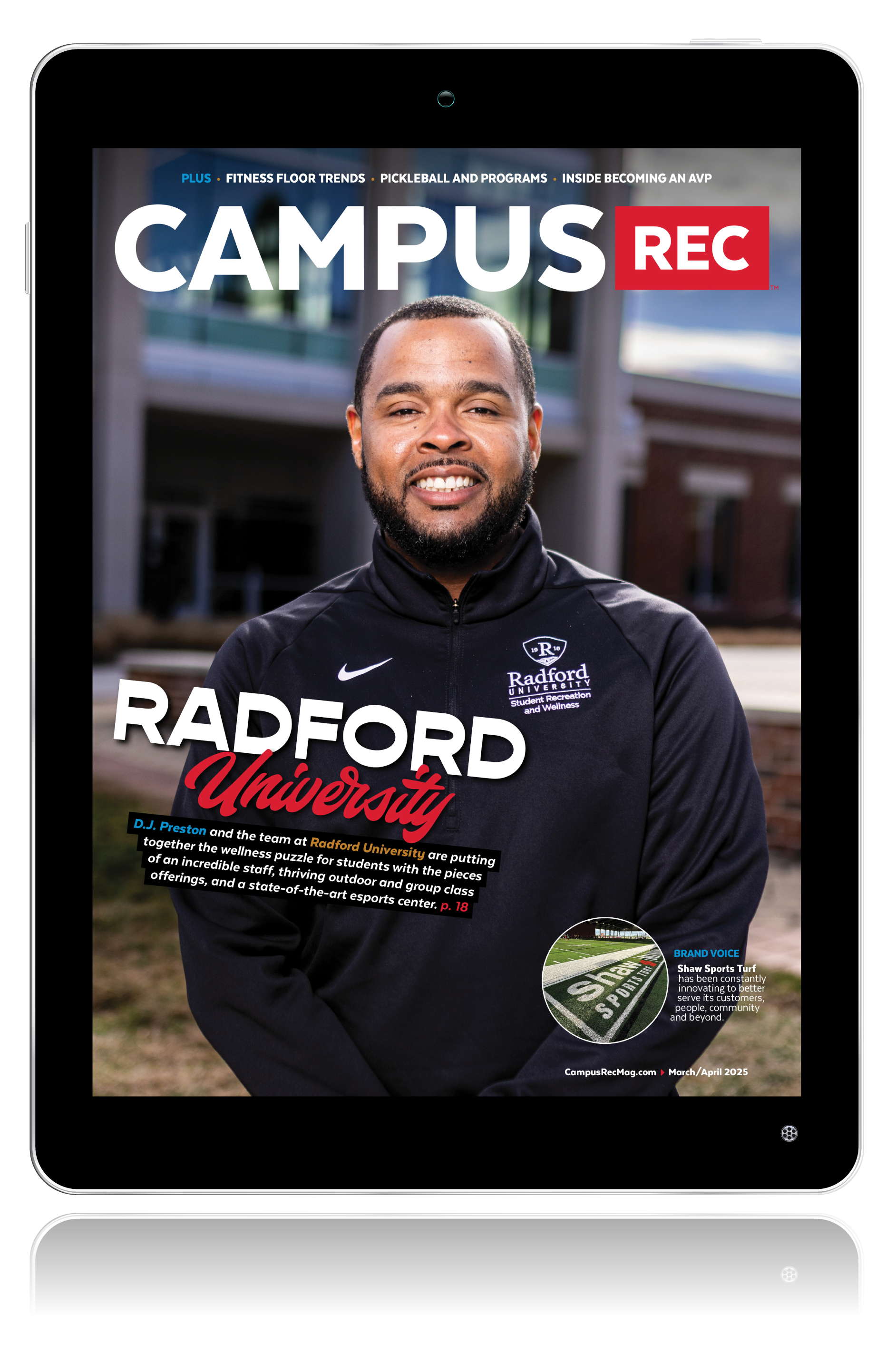You have probably heard the saying, “Practice what you preach.” Well the Campus Recreation department at Georgia Tech University is doing just that. Last year, the department launched the Minutes Challenge in order to motivate professional staff to get active.
“We didn’t want to say workout, it was about making a conscious decision to be more active,” said Carolina Dotts, the associate director of healthy lifestyle programs at Georgia Tech. “We really focused on the activity piece of it. We wanted to ensure we were all working on personal wellbeing in terms of physical activity.”
The department was split into two teams. Throughout the spring semester each team member logged all of their physical activity that was 10 minutes or longer. “Everyone had their own Google Doc so people could go in and log their activity,” she explained. “We made sure our list of activities aligned with the ACSM list for physical activity, which includes things like gardening or other things that you might not normally consider exercise. But we really wanted to focus on activity and not just exercise. You could log anything, multiple times a day as long as it was intentional physical activity for 10 or more minutes.”

They even found creative ways to stay active throughout the work day. “We switched to walking meetings so we could all get our steps in,” said Dotts. “If I met with my team and went for a walk, then that was 20 minutes towards our goal. The secondary thing we were trying to do with the challenge was to encourage our teams to work out together or be active together.”
Launching a challenge like this had numerous benefits. Not only did it encourage staff to stay active and foster teamwork, but it was free. It cost nothing to put together other than time to create the spreadsheets and track the numbers. Dotts said she would highly recommend trying something similar within your department. “Even if it is something small, just start it. It was a great way to bring our unit together.” she said. “Make it fun for your unit. Keep it simple and keep encouraging people to do it.”
Expert Advice
“Have someone who is dedicated to running it. But it doesn’t have to be the usual suspects like a fitness or wellness person. It can be anyone who takes charge.”










